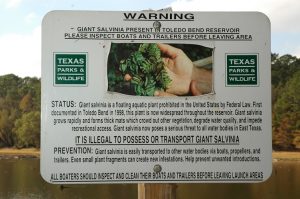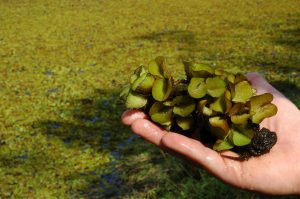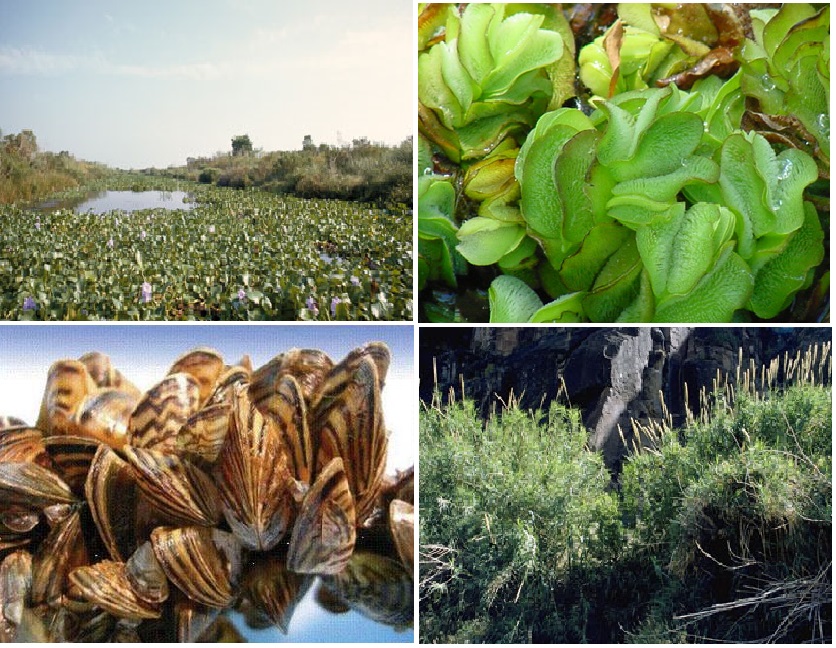Eradicating Giant Salvinia
Thursday, July 25th, 2019This is Passport to Texas
In the 1958 movie The Blob, an ever-expanding goo from outer space threatened humankind. Today, Texas lakes are being invaded by a “blob” of a sort called Giant Salvinia: a floating aquatic fern that can double in size every seven to ten days.
In order to control it we have to be able to get on it early.
John Findeisen is a Natural Resources Specialist at Parks and Wildlife. His Aquatic Habitat Enhancement team is working to contain and eradicate Giant Salvinia.
We’ve starting using a lot more floating booms to keep it contained. We’ve found that if you can keep it contained then your chances of eradicating the plant are a lot easier.
Floating containment booms along with targeted herbicide treatments and freezing temperatures helped John’s team eradicate the plant from Lake Fork and Lake Athens in East Texas. But Giant Salvinia remains a threat.
The threat always remains. What we need to do is to get the recreational boaters, our angler, as well as our duck hunters to make sure that you clean, drain and dry. Clean out everything you have. Clean your boat, the trailer, the motor. When you find that stuff pull it off, throw it in a trash can or onto the ground where it’ll dry up and die.
Help stop the Giant Salvinia blob. Remember to clean, drain… and dry.
The Sport Fish Restoration Program supports our series.
For Texas Parks and Wildlife…I’m Cecilia Nasti.






 Passport to Texas is a
Passport to Texas is a  Passport to Texas is made available by:
Passport to Texas is made available by: